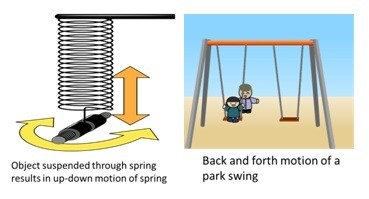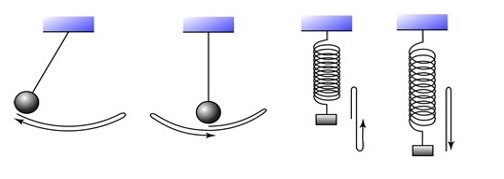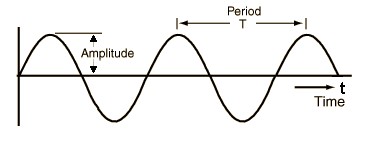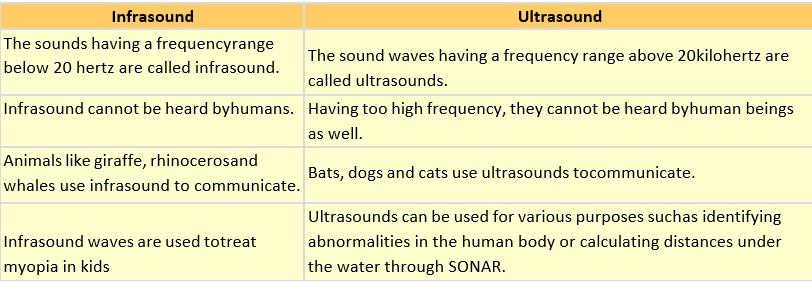Oscillatory motion – When an object oscillates in a ‘to and fro’ motion, that is, when an object vibrates back and forth, is said to have an oscillatory motion.

Oscillation: An oscillation is said to be the movement of an object from one point to another in a regular interval of time. One oscillation is said to be the journey between the two endpoints or extreme points of the motion of the object.

Characteristics of sound
Frequency – The number of oscillations completed by an oscillatory body per second is called its frequency.
The SI unit of frequency is Hertz (Hz).
Example – 1 Hz = 1 oscillation per second, 20 Hz = 20 oscillations per second

Time Period: The time taken for one complete oscillation of a sound wave is called the time period of the sound wave. Time period = 1/ Frequency.
Amplitude: the maximum displacement of molecules of the medium from the mean position is the amplitude of the sound wave. The amplitude of a sound wave can be defined as the maximum displacement of the particles from their mean position due to the vibrations.

The loudness of a sound
- The loudness of a sound depends upon the amplitude of the sound.
- The higher the amplitude, the higher the displacement of the particles and the higher is the loudness of the sound.
- The loudness of the sound is directly proportional to the square of its amplitude.
The SI unit for measuring the loudness of a sound in decibels (dB).
Pitch of the sound
- Every person has a different sound quality.
- Also, every musical instrument vibrates to produce a different kind of sound. This quality of sound is characterized by the Different qualities of sounds that may have the same pitch and loudness.
- The pitch of a sound depends upon the frequency of the sound wave.
- The pitch would be higher if the frequency of the sound is high.
Difference between the loudness and pitch of the sound
Pitch – It depends upon the frequency of the sound. The Pitch of a sound is how our ears react to the frequency of a sound.
Loudness – The loudness of a sound depends upon the amplitude of the sound wave. The loudness of sound also depends upon the energy of the sound wave.
Audible and inaudible sounds
- Sounds that can be heard by human ears are called audible sounds. The range of audible sounds is from 20 Hz to 20 kHz.
- Sounds that cannot be heard by human ears are called inaudible sounds. Any sounds having a frequency less than 20 Hz or greater than 20 kHz are categorized as inaudible sounds.
- The inaudible sounds can be divided into two categories as infrasound and ultrasound.
